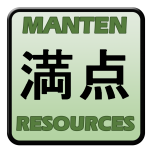The new syllabus directions encourage us as teachers to help students develop knowledge across all the specific skills in a more fluid manner than we did in the past. Previously we may have planned our lessons around single skill-based tasks such as a listening drill, a speaking task, a reading comprehension and a writing task. The new syllabus goes as far as grouping skills such as reading and listening under terms such as Accessing and responding. In order to better prepare students to develop such a fluid mindset I have been reflecting on how we can structure activities in class to develop such skills simultaneously. Here are 3 ideas I have been enjoying this week.
1.The question word warm-up
Due to the structure of our exam system in Year 11 and 12, students tend to focus their language learning on being able to answer questions, rather than ask them of each other. As such, I find many of their speaking errors are actually due to not focusing on the specific question word used. They tend to predict rather than consider what is being ask of them. For example, a common error if you ask what grade are you in (何年生ですか。) is to tell me their age confusing the two common questions (何才ですか。). I know that they know the answers to both of these questions so the error is not an issue of ability but rather an issue of unfocused listening.
This warm-up activity begins by having students brainstorm all known question words in Japanese such as いつ、なに、どこ. I then selected the question they had remembered least well and had them jot down, if they could, 3 questions using this word. Each student then had to tell me one of their questions and I wrote it on the board helping them correct any errors that may have been in their original question. Once the questions were on the board, the students had to choose one, read out the question and respond to it. This allowed for natural differentiation as students self-selected the question they felt confident answering.
If you have a large class, you can have them do the task in pairs or threes, generating the initial questions and generating the answers together.
2.The uso/maji game.
I have a son in Year 7 so I know personally how hard it can be for teenagers to listen to others and process what the other person is actually saying! This game works on improving this weakness.
Students are asked to write 4 statements about themselves in Japanese. This could be as simple as 4 statements using すき・きらい or as sophisticated as describing experiences they may or may not have had using たことがあります. Three of the statements are true and one is false (or you could do the opposite.)
The rest of the class then listens to the student read out their statements and they have to decide which is the うそ(lie). They write down in their books the statement in the following way : うそは「へびが好きです」。The teacher calls on 3 people to read their guesses and the student who wrote the statements answers with either 「はい、うそです。」or 「いいえ、まじです。」. I found the students loved to use the slang まじ (for real) and it gave the game more a more “edgy feel”.
Again, in larger classes, you can do the task in pairs or small groups. For younger students you may want to focus on particular scaffolds for grammar structures you are studying. For older students I would correct on the spot if they had any errors and write the changed sentence on the board if needed.
3.The writing stimulus
For Senior students encouraging them to write more frequently is always a challenge. I find boys in particular struggle in writing tasks because they try to stick to the truth, rather than write well within the confines of their vocabulary and grammatical knowledge. This task works on improving the students ability to be imaginative and flexible when answering in the writing task space.
We began this task by looking at 4 stimulus questions from their textbook which happened to be about travel in the future tense. The questions focused on where the person was going, by what mode of transport, how long it would take and what they would do there. I then paired the students up and had them answer those question in the past tense reflecting on the recent school holidays. The answers could be as bland as “I went to the local shops by train and went shopping.” Student A then took that information and had to write a recount of Student B’s day. They were allowed to be imaginative within appropriate boundaries. I found by writing about another, based on very scant details they were better able to move beyond the truth and tap into a creative response within the confines of their language ability. We did the speaking aspect of the task during class and the writing task at home.
All three tasks aim to move from one skill to another fluidly, combining listening and speaking with reading and writing as much as possible.
Other posts you may like:
